Deer Island Open Space Preserve
Jack Gedney, February 2, 2016 Click here for printable pdf version
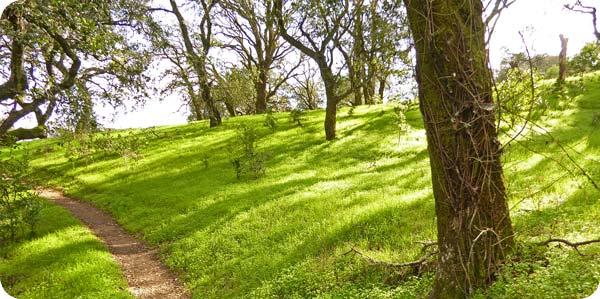
|
Deer Island is not exactly an island, at least not anymore. These days it is a lightly-used open space preserve in eastern Novato, centered around a hill which rises from the surrounding flatlands which were once part of the Petaluma River delta. One nice thing about Deer Island is its convenient, digestible smallness: a short and level 1.8 mile loop circles the “island,” or you can go on a central trip over the top (some 180 ft. in elevation) before returning via the loop trail on either side. (If you go over the top, stay on the clear De Borba trail—there are a few side trails that peter away to dead ends or steep descents. See map from Marin Open Space.) The preserve is mostly covered by mixed oak woodland, but its unique surroundings mean that it also offers views of waterfowl and open country raptors. For the sake of illustration, we’ll describe a clockwise route around the Deer Island Loop Trail, heading left from the entrance. The first short stretch runs parallel to the neighboring storage facility and is the least scenic part of the walk. But once that’s out of the way, there’s a lot to look forward to. You soon get some views of nearby ponds and surrounding open fields which can attract waterfowl, pelicans, and hawks like harriers or merlins. In general, you won’t be very close to the water throughout most of your time at Deer Island—often just at the outer range of bird identification by binoculars. You’ll also come fairly soon to a huge multi-trunked “octopus” California bay, with numerous large limbs stretching outward, arching to the ground, and climbing back into the air like so many tentacles. And a little after this, right at the intersection with the De Borba trail which heads up the hill is another favorite tree: a four-trunked buckeye intertwined in the midst of a two-trunked bay. The fresh new leaves of the early awakening buckeyes are always a highlight of early spring. But on to the birds. At times, some parts of the winter woods may seem quiet, but at other spots you will run into mixed-species flocks that suddenly surround you with a multitude of different birds. One of the most common winter constituents of these flocks are ruby-crowned kinglets, who join resident birds like chestnut-backed chickadees, oak titmice, white-breasted nuthatches, brown creepers, bushtits, and dark-eyed juncos in exploring the oaks for insects and other food. Deer Island has sufficiently dense woods to also host lesser numbers of the more forest-inclined birds in winter, such as golden-crowned kinglets, Townsend’s warblers, and hairy woodpeckers. The other very noticeable winter songbird making short insect-catching sallies from the oaks are yellow-rumped warblers, who will often be seen in groups of their own species as well. Towards the far end of the island from the starting point are some larger ponds, which tend to offer the biggest variety of water birds, though admittedly at some distance. Some common ducks and waterfowl to sight here in winter include northern pintail, bufflehead, ruddy ducks, coots, pied-billed grebes, and Canada geese. Look closely around the pond edges for various egrets and herons, as well as the occasional otter. This part of the preserve is another good place to watch out for raptors: the wide open seasonal wetlands offer good hunting for kites, kestrels, and harriers while also attracting lower numbers of the exciting winter hawks like the huge ferruginous hawk, peregrine falcon, and merlin. On my last two visits in early 2016, an adult golden eagle made a few low elevations turns around this end of island as well. The last third or so of the loop is on average less densely wooded than the opening stretch and attracts a slightly different group of birds. Some of the oak regulars will still be present, like juncos, titmice, and acorn and Nuttall’s woodpeckers. Look on fences and other perches on the increasingly open lower slopes for black phoebes and, in winter, Say’s phoebes. The flat lowlands which you eventually enter can host a variety of sparrows in winter, including the ubiquitous white-crowned and golden-crowned sparrows, but also the subtly distinctive Savannah and Lincoln’s sparrows. You may often see a flock of dull portly birds take flight from these flat open areas, then be struck by brilliant gold if they turn towards you to reveal their front sides. These are western meadowlarks, who even in winter (when they are most abundant here) can occasionally be heard singing like more musical blackbirds, but with some of the same liquid fluting quality of their relatives. |
The "Octopus" Bay |
|
Ruby-crowned Kinglet |
|
|
|
|
|
|
There’s one other thing to look for as you gaze across the Novato Creek floodplains: us! Careful scanning with binoculars will reveal the back side of the Vintage Oaks shopping center and, while we don’t have a prominent sign in back, those in the know—like you—will pick out a small gray door between Extreme Pizza and BevMo and think hey, don’t I need some birdseed? From there it’s a short walk back to the parking area—and one more short hop to visit us and let us know what you’ve been seeing!
Directions: From Hwy 101 in Novato, take the exit for Atherton Ave east 1.7 miles. Turn right onto Olive Ave and left onto Deer Island Ln. Gate and small parking area will be on your right.
- Go to Birding Sites Homepage -


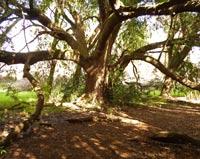
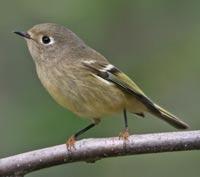
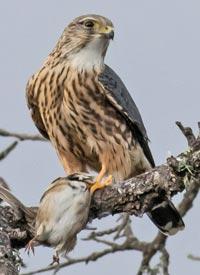 Merlin at Deer Island
Merlin at Deer Island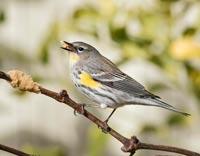 Yellow-rumped Warbler
Yellow-rumped Warbler